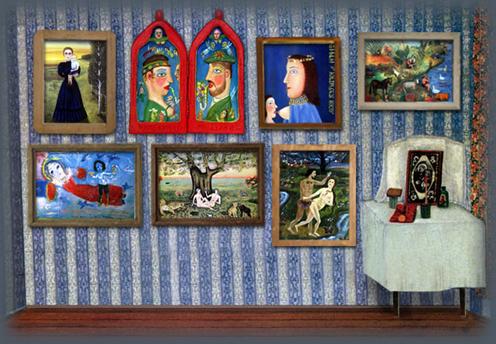In mythological cognition the nature and the origin of the phenomenon are identical. On his way into the depth of myth naive painter comes to the archetype of beginning. He feels very much the same as the first man exploring the world around. All the things, animals and people on his canvases look unusually, hard to recognise. Just like Adam giving the names to everything, naive painter supplies the banal things with new meaning. He is well concerned about heavenly bliss. The artist as an initial state takes idyll. Naive art brings us back to the childhood of the mankind, to the happy ignorance.
Not less popular was the theme of the Fall. Popularity of this subject indicates the existence of some deep relationship between the myth of the first man and the fate of the naive painter, with his philosophy of life, his spiritual history. Adam and Eve being expelled from Paradise feel this lack of heavenly bliss and their dissonance with earthly reality. They are very close to naive painter. He is aware of childish tranquillity; he knows the excitement of construction and bitter feeling of exile. Naive art reveals the contradictions between the intent to learn and explain the world and a wish to bring harmony in it, to revive the lost mythological unity of the world.
The picture of a harmonious, ideal world appears in Elena Volkova's painting "Shepherd-boy". The image of new Orpheus, a naive painter, bearing both lost and returned paradise in himself, confirms the idea of the unity of life and art as one of the basic principles of the naive art.
